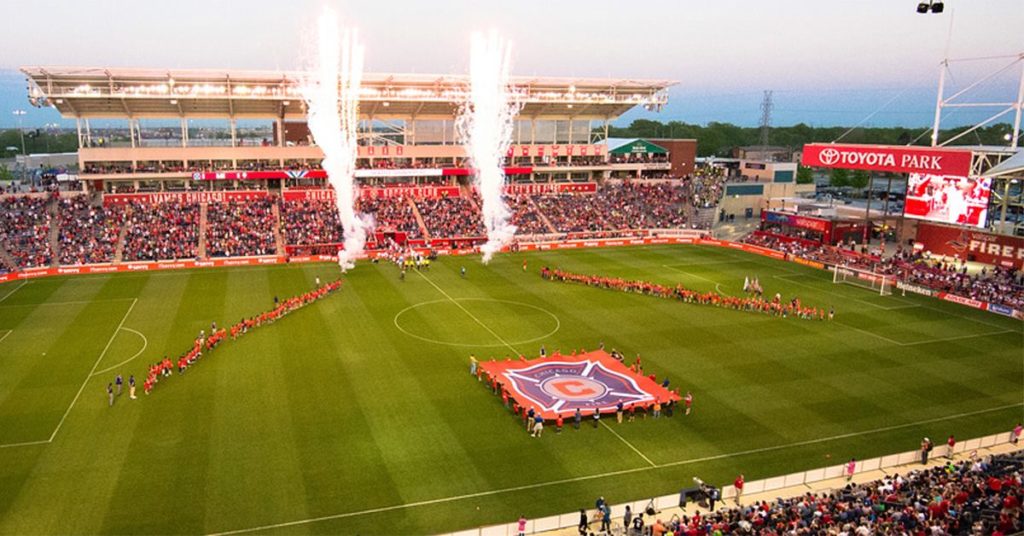
Although the club is no longer using it for home matches, Chicago Fire FC has upgraded facilities at SeatGeek Stadium, helping to make the most out of training at the venue.
The 2020 MLS season marks a return to Soldier Field for the Fire, who reached an agreement last year to break a lease to SeatGeek Stadium in suburban Bridgeview that was to run through 2036. While that action helped pave the way for the Fire to move home matches to Chicago, the club did not completely sever ties with Bridgeview, as it continues to use SeatGeek Stadium’s behind-the-scenes team facilities for training and potentially other events.
Over the offseason, the club invested in improving training-related amenities at SeatGeek Stadium, including team facilities like the locker room and workout area. Under owner Joe Mansueto, the Fire has been working to reshape its organization—with the move to Soldier Field and an offseason rebranding part of that approach—and the club believes that improving these facilities fits into that overall strategy for growth. More from the Chicago Sun-Times:
The first team locker room has been reconfigured and modernized, the coaches’ room has new space, the available workout space has been tripled, and refueling/wet room space for physical therapy staff was added. There’s also a new video room with stadium seating, the players’ lounge was renovated, the home auxiliary dressing room has 22 new lockers for academy players, and 9,000 feet of space for what was once the front office (which moved downtown) was replaced by room for soccer operations.
“It was a completely new place for us. It was completely renovated,” Fire sporting director Georg Heitz said. “Joe invested a lot there. Just for an example, the video room looks a bit like a cinema. It’s really night and day. It’s really a complete change of this location. It is clear we will improve more.”
And more investment is likely.
The Fire are set to be in Bridgeview for five years, but Mansueto said in January that longer-term the franchise needs to have its own Chicago training center for the academy and eventually the first team. Ultimately owning a USL affiliate is also something Mansueto said he’d like to see.
The Fire was scheduled to play its first 2020 home match at Soldier Field on March 21, but that game was effectively postponed after MLS last week suspended its season for 30 days in response to the ongoing coronavirus pandemic. Once the season resumes, the Fire will hope to reverse attendance issues that had played out at SeatGeek Stadium, as the club finished the 2019 season with a per-game average of 12,324 fans–good for last in the 24-team MLS. With Chicago’s central city proving to be a high-growth area, the hope is that the Fire will be a better draw at the NFL stadium than it was at the suburban SeatGeek Stadium. SeatGeek Stadium, meanwhile, continues to serve the club a vital role for training, with the Fire looking to get the most out of that arrangement by investing upgrades to its facilities.
Archival image courtesy Chicago Fire.
